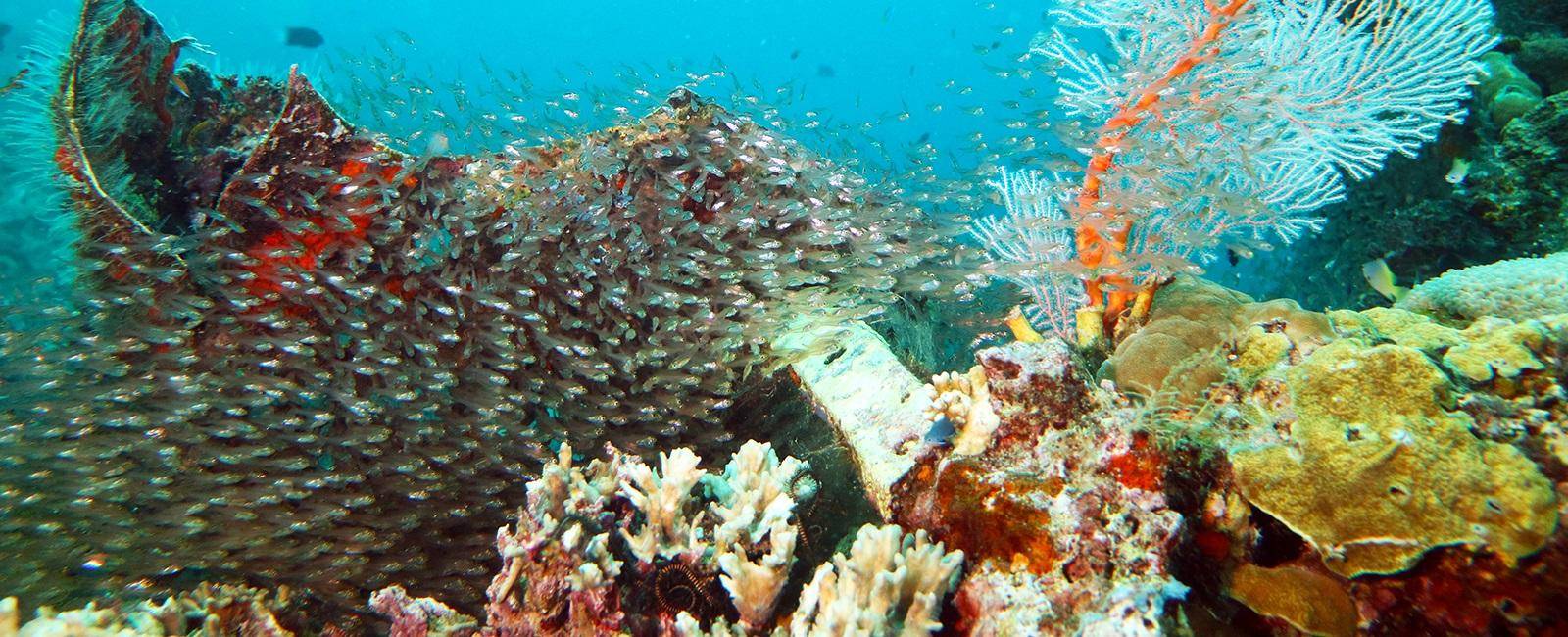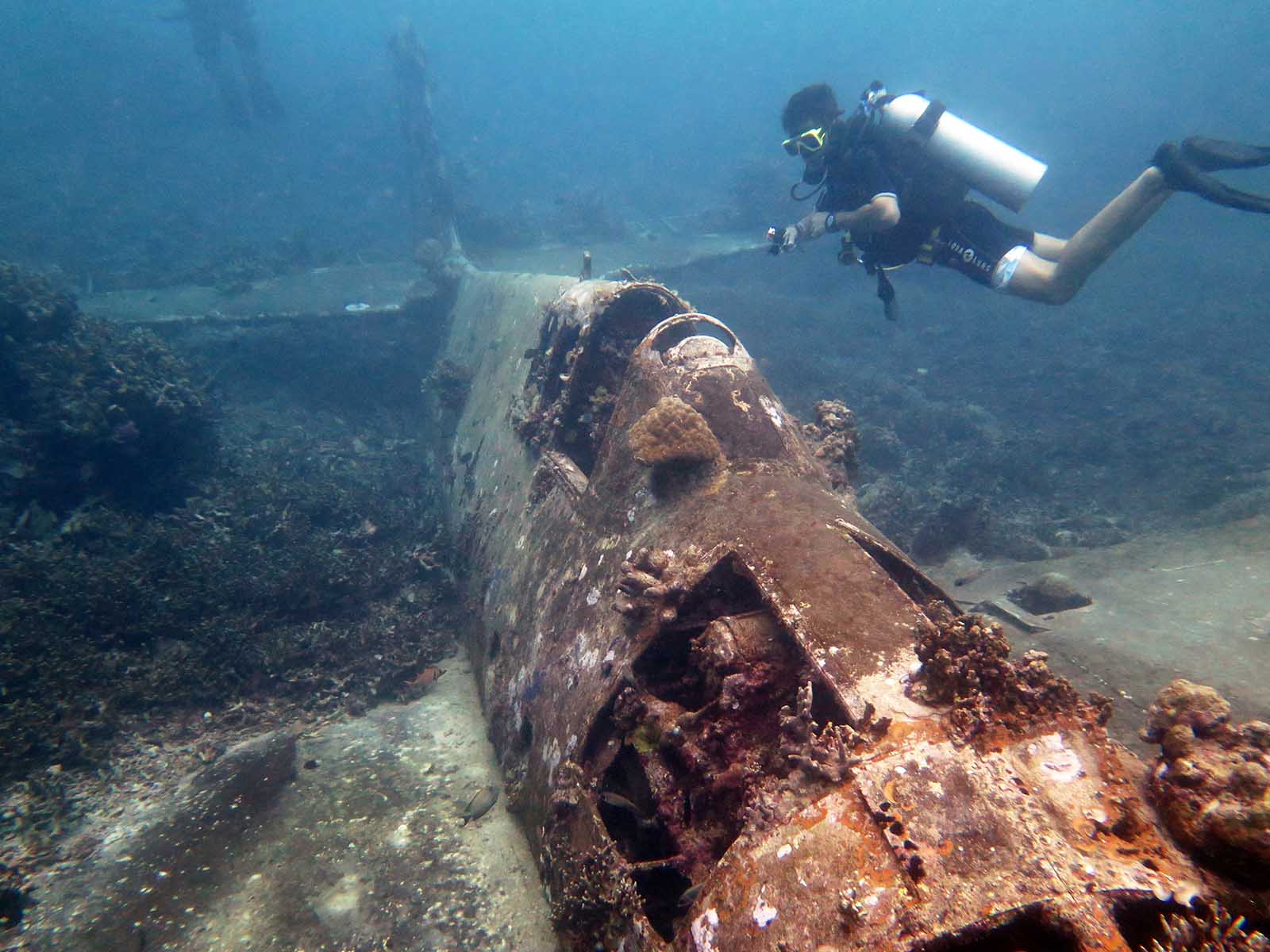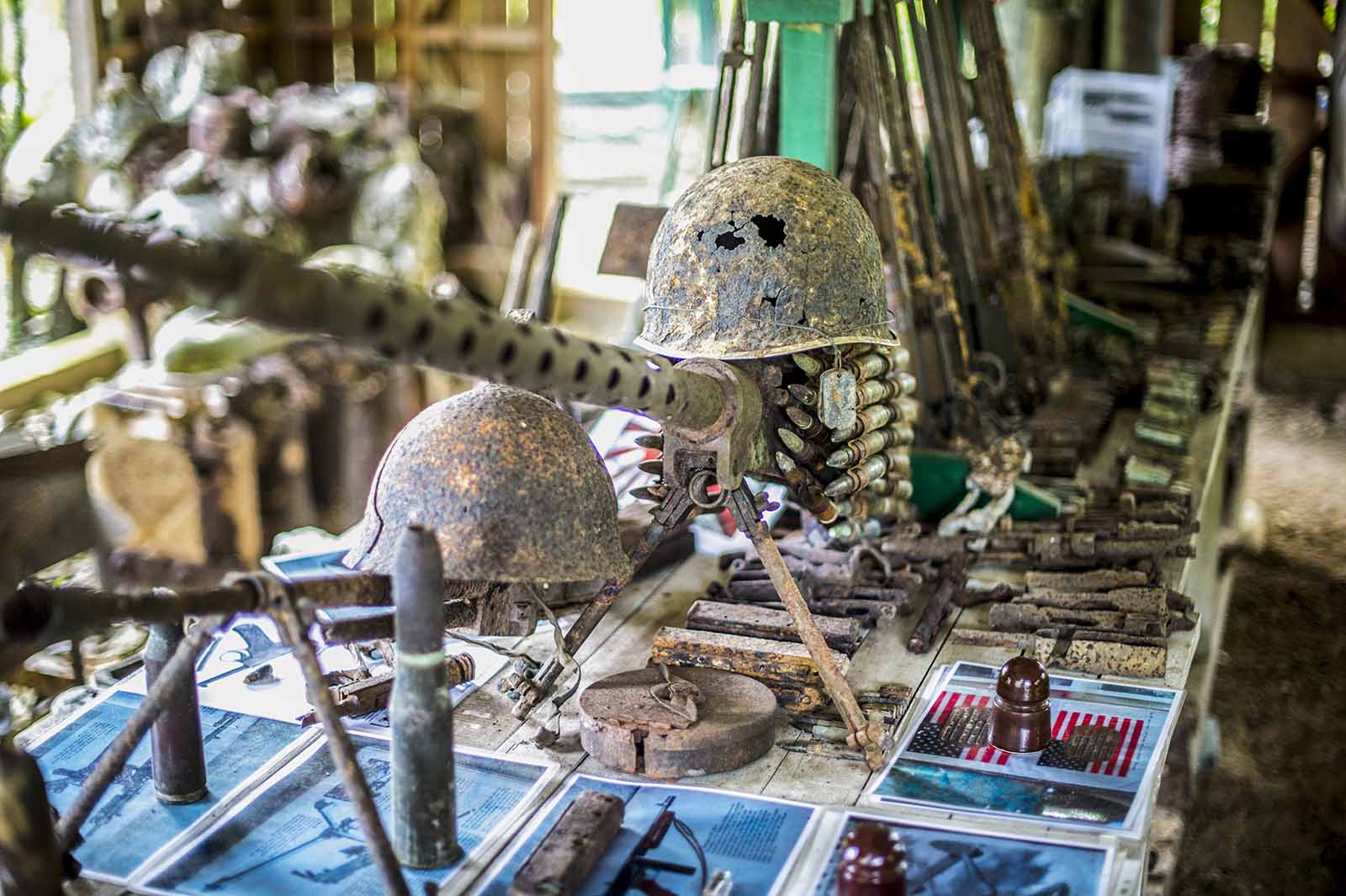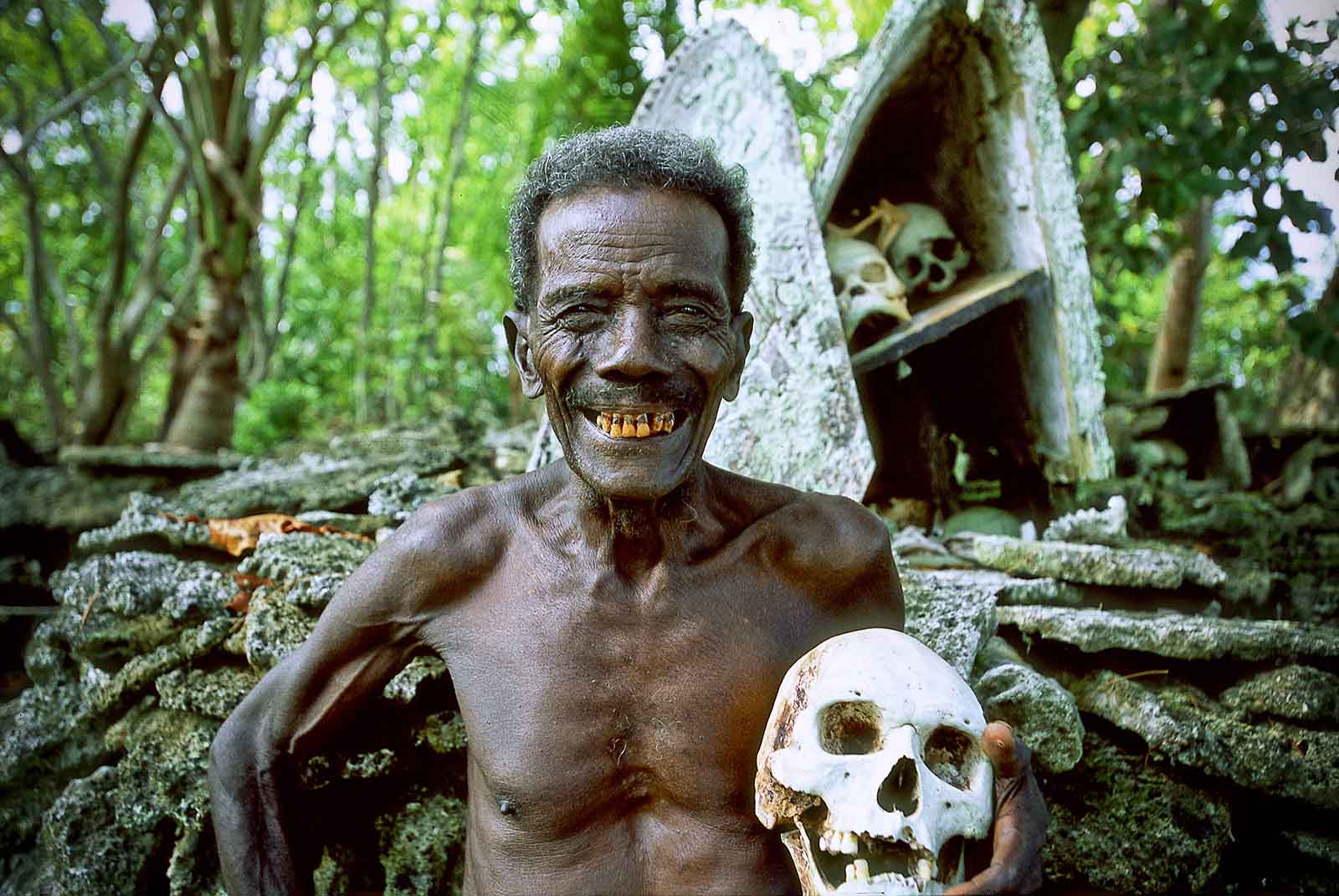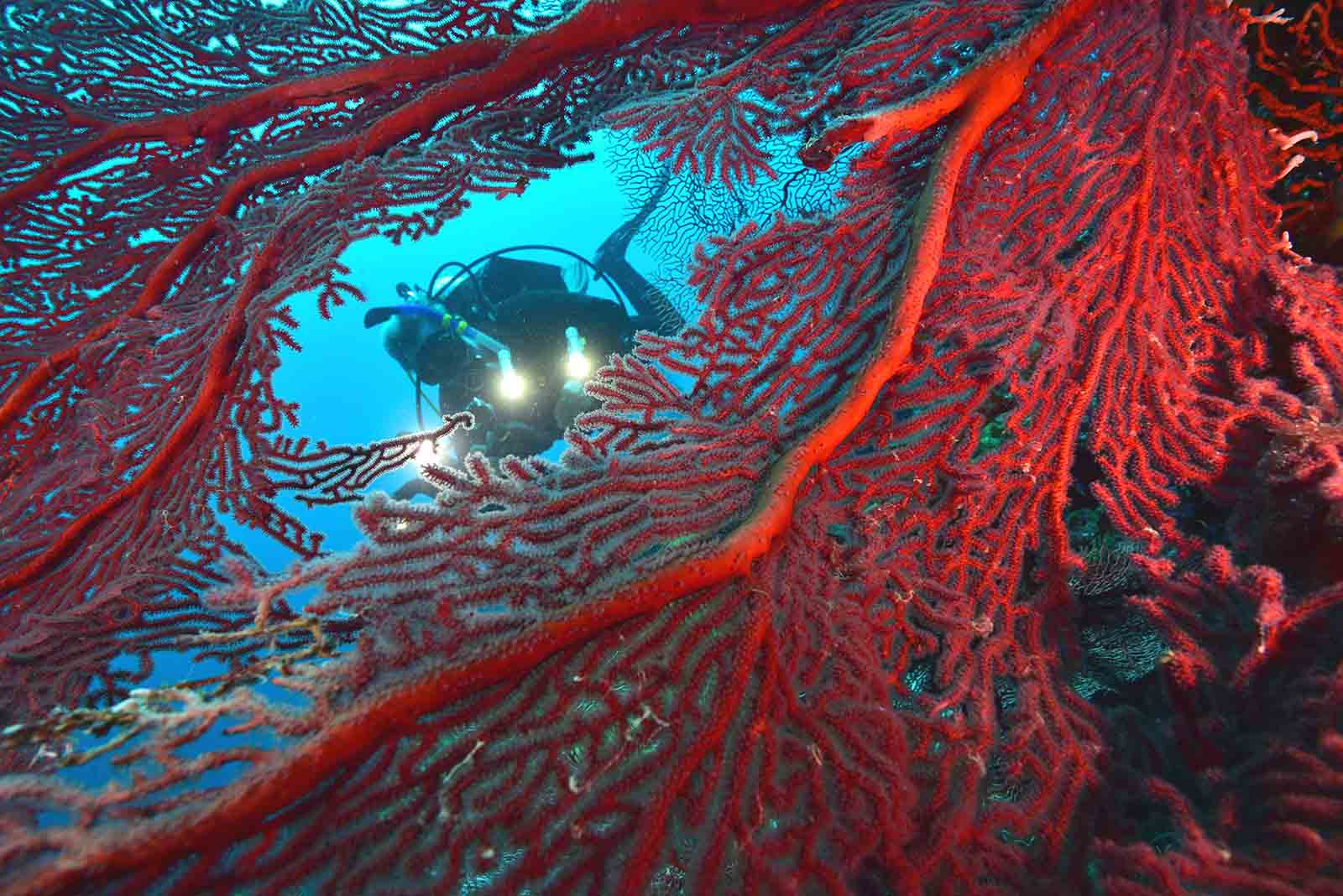
The Solomon Islands Western Provinces may seem like the last wild frontier of the South Pacific to some; I confess they certainly did to me. And Munda? A spot on the map I'd never heard of. But all that changed with my first visit four years ago and it was love at first sight with the region's stunning landscapes, both above and below the water.
I first caught sight of Munda and the surrounding islands out of my plane window, a view of turquoise lagoons dotted with lush green tropical islands, each fringed with white sandy beaches and surrounded by shallow coral reefs. I couldn't wait to jump in.
As a keen scuba diver, I'm always looking for new underwater worlds to explore and there's so much to see in the Western Provinces I have been back three more times since... and I'll be returning again soon because, for a diver, the area has got it all: reef, wrecks and biodiversity.
Massive marine diversity
In fact, this is the world's epicentre of biodiversity. Situated on the eastern tip of the Coral Triangle, the Solomon Islands has one of the highest diversities of marine life in the world with 2,228 species of reef fish and 605 species of coral recorded. But it's just not the coral reefs that attract such an abundant variety of fish. Dotted throughout the lagoons of the Western Provinces (and throughout the Solomon Islands) are remnants of hundreds of wrecks of WWI planes, ships and submarines, the legacy of its position in wartime action, now home to myriad colourful marine life from the Nemos and Dorys, jack fish and barracudas to the larger pelagic creatures such as sharks, turtles and rays.
There are stacks of dive sites near Munda with names that conjure up tales of adventure like Shark Point, Barry's Breakfast, Alice in Wonderland and The Cave of the Kastom Shark, a cave dive that you enter through an opening at the centre of a small island, descend down a chimney and into a tunnel which opens up onto the coral wall about 20 metres deep with enourmous sea fans silhouetted in its entrance.
Alice in Wonderland is named for the enormous leather corals found there, which look like giant mushrooms. The reef wall at Shark Point is covered in corals of all shapes, sizes and colours, populated by equally colourful reef fish and out in the blue, big schools of snapper, trevally, barracuda and, as the name suggests, reef sharks.
Sunken treasures
In such surrounds it's impossible not to be thrilled by the marine life, the amazing colours and formations life creates on coral reefs but, until visiting this area, I wouldn't have been excited about diving to great depths to look at rusting hulks of sunken ships. However, it was in Munda that I changed my mind about wrecks.
Over two shallow dives we explored the wrecks of two American fighter aircraft; the first a Bell P-39 Airacobra, one of the principal American fighter craft in service when the United States entered the war. Sitting of the sandy sea floor, it's reasonably intact. Surprising, but not the first thing I notice about it. What I notice first is that I almost can't see it at all for all the fish. It is surrounded by large schools of juvenile fish and, when I get close enough, I can see it's full of them as well, along with hundreds of colourful shrimp. The body of the plane, which I assume was once painted in a US air Force standard military grey, is camouflaged in colourful coating corals which create gorgeous patterns along the length of the plane.
The second wreck is a Douglas SBD Dauntless, an American naval scout plane and bomber. It's also sitting on a sandy bottom in very shallow water, covered with soft and hard corals and teeming with life.
Salvaging war relics
Back on dry land we stumble upon another wreck on our way to visit a nearby WWII Museum. It's a jeep, salvaged from the jungle by local character, Alfie Rex Lay, who has lovingly restored it to working order, using parts also salvaged from the jungle.
Barney Paulsen is another local who has been collecting war relics and memorabilia from all over the island for more than 15 years. He's accumulated so much he's built his own shed to house it all, and called it the Peter Joseph WWII Museum after his first find, the dog tags belonging to one Corporal Peter Joseph. In fact, there are piles of dog tags sitting among neatly ordered stacks of hand grenades, guns, bullets, Coco-Cola bottles and mess kits in Paulsen's private museum and I can't help thinking that there's an untold story behind them all.
It's a stark reminder that this small and so tranquil island nation has a brutal past as the scene of the of the bloodiest naval battles in the Pacific during WWII and the archipelago is littered with wrecks of all shapes and sizes on land and underwater. Each wreck has its own poignant story, the tragedy that brought it to rest and the still unfolding story of the reef society that has adopted it as its own.
More to explore from Munda
Easy for beginners
Munda is surrounded by quite shallow lagoons, so you don't need to be an experienced technical diver to dive the wrecks, and there is plenty of choice for shallow reef dives. Many sites (including some wrecks) are also accessible on snorkel. Snorkel tours and gear can be booked at Dive Munda based at Agnes Gateway Hotel.
Go deeper
Dive Munda is a Scuba Schools International Training Centre, owned and operated by instructor trainer Belinda Botha who has trained many locals up to Dive Master qualification. Divers start with the one-day Try Diving course suitable for people with no previous experience and by the end of the day can take divers down to 12 metres at almost any of their nearby dive sites, including wrecks such as the Kashi Maru and the Douglas Dive Bomber which have interesting stories.
Beginner divers can reach certification level in three full days of training.
Island hopping
Other activities from Munda include fishing trips and cultural tours to villages and other islands including the tiny Skull Island where the last cannibal skulls are enshrined, moved there when the region was converted to Christianity by missionaries.
Gizo is a two-hour boat trip (15 minutes flight) from Munda and is equally beautiful for diving and snorkeling with lots of pretty reefs and its fair share of wrecks. The Japanese transport ship Toa Maru is one of the largest wrecks in the Solomon Islands at more than 140 metres in length and lies about 20 minutes offshore.
Nearby Kennedy Island is a popular picnic and swimming spot, named for one Lieutenant John F. Kennedy who was rescued nearby after his frigate was torpedoed during WWII and later became the 35th President of the United States of America.
One of my favourites is Uepi Island, accessible from Seghe, the most family-friendly resort in the Western Provinces, with a shallow lagoon on one side where you can swim with turtles, go kayaking or stand-up paddle boarding. One the other side, a pristine coral reef drops off into deeper water and just under the jetty you can snorkel with reef sharks in crystal clear water.

